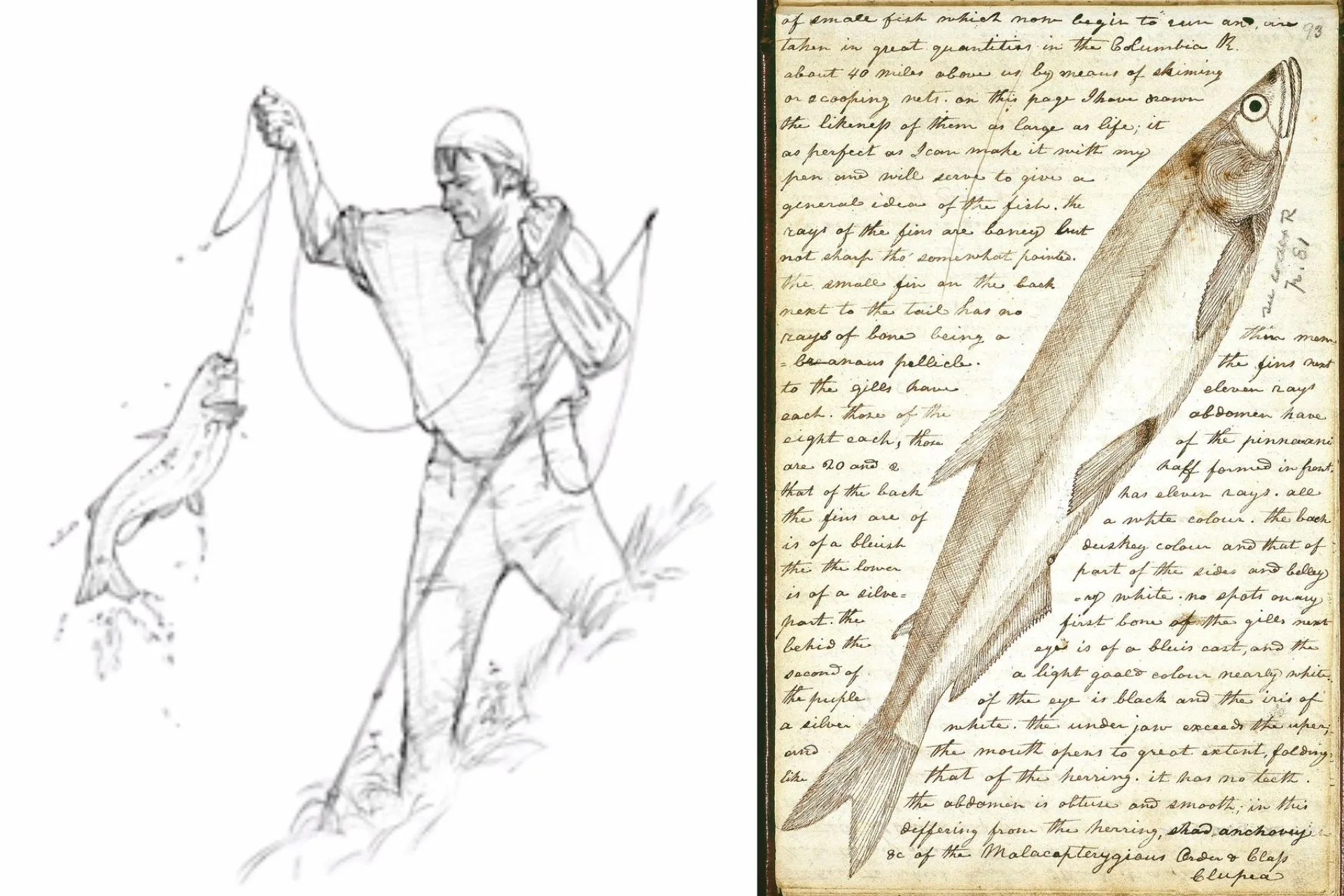There was a time when only the native people fished for trout and other species in Big Sky Country. Fish were an important part of their diets. Villages would move to catch schools of fish during seasonal spawning runs.
In 1804, Lewis and Clark began their westward expedition up the Missouri River. They used a large boat to haul food and gear. At this point, fishing was not seen as a reliable way to gather food. There were plenty of big game, and other foods available.
When the expedition stayed over the winter with the Mandan tribe, in South Dakota, they learned that fish were abundant and tasty. You could smoke and salt fish for transport and later consumption. The Mandan’s preferred trapping and netting their fish. Some used rods and hooks, but this was seen as a waste of time and energy, to just catch one fish at a time. Archery and spears could also be deployed.

After learning about all the fishing tips and tricks, Silas Goodrich was appointed the “Designated Fisherman”. Silas was also a practiced angler back east, where he enjoyed catching Brook Trout in the Appalachian Mountains.
Lewis recorded Goodrich’s fishing skills in his journals. “Goodrich was skilled at catching exceptionally large fish”. When Goodrich was on scouting parties with just a few other expedition members, he would use a willow branch, and a hook baited with grasshoppers, homemade flies, or worms. No reels were on the rods. His line was made from the hair from horse tails woven and waxed together.
Silas taught others how to use fishing spears and barbed arrows to target larger fish near the shore or in small creeks. If they were camped for a week or so, fish traps were made and deployed. Many of these traps were cached for use on the way back.
Making long nets was also a way to capture large numbers of fish. The nets were stretched across coves or beaver ponds. They then dragged the nets toward the shallow end and gathered up the mass of fish. Lewis recorded one haul that captured “300 trout in one pull”.
When the expedition came to the Great Falls, Silas cut a long willow branch and went to work. It was June 13, 1805, and a large stonefly hatch was in progress. These large Salmon flies are documented in the Lewis journals. Silas caught several large trout with a distinctive coloration. He “baited a crafted metal hook to catch these hungry fish”. The trout” resembled our mountain or speckled Brook trout in form and in the position of their fins, but the specks on these are of a black instead of red or gold colour of those common in the eastern United States. These are furnished long sharp teeth on the pallet and tongue and have generally a small dash of red on each side of their bottom mouth and behind the ventral fins.” This is the first documented information of the Yellowstone Cutthroat trout, native to the region.
Native peoples had always known of the fish and had a story about how the fish got its special markings. Apparently, neighboring tribes competed for these fish. Eventually, after much fighting and bickering, one tribe won the battle. The chief told his warriors to catch and release all their fish they could, but to mark them before releasing them. “Use your knives to make 2 marks along the trout’s mouth.” This is the first known Catch and Release fishing scenario ever documented. If native people caught fish, they were eaten. Throwing them back was seen as a dumb thing to do.
There was no way for Lewis and Clark to catch fish and take selfies or pictures of their “Catch”. Only sketches and drawings could be recorded. This meant that the fish would be dead before a picture was rendered and remembered.
Fishing became an important part of providing food for the expedition throughout the rest of the trip.
Silas Goodrich became the first Fly Guy of Big Sky Country!
Montana Grant




